Below is the translator’s introduction to Qari Muhammad Tayyab’s monumental book Maslak ‘Ulama-i-Deoband (The Way of the Scholars of Deoband). Originally written in Urdu by one of the greatest ideologues of the Deobandi school, this book sets out to define what the way of the scholars of Deoband is. It will soon be available from Turath Publishing – Ismaeel Nakhuda.
Global geopolitics over the last twenty years has been such that Deoband and the scholars affiliated to it have prominently appeared in the public conscious. What and who the scholars of Deoband are, what they believe in and what their positions on issues are seem complex, confusing journalists, academics and even common Muslims. There are some whose explanations are on mark but the attempts of the majority reminds one of the famous parable of the blind men and the elephant.
The thirteenth-century Sufi scholar and poet Mawlana Jalal al-Din Rumi (1207-1273) includes a version of this story in his famous Mathnawi-i-Ma‘nawi. In his retelling, the elephant is in a dark house in India with people ‒ not necessarily blind ‒ entering the darkness to see it. Seeing it with the eye, however, is impossible and so they feel it in the dark and depending where they touch it, they believe it is like a water-pipe (trunk), a fan (ear), a pillar (leg) or a throne (back). The Mawlana writes, “Similarly, whenever anyone heard [a description of the elephant], he understood [it only in respect] of that part that he had touched.”
It was in 1866 that Dar al-‘Ulum Deoband was founded in humble surroundings beneath a pomegranate tree in the old Chattah Masjid (Beehive Mosque) in the sleepy town of Deoband. Today, Deoband is a global movement with graduates of the Dar al-‘Ulum at Deoband and its affiliated madrasahs found across the world. With Deobandis involved in different activities and working in diverse fields, it often happens that journalists and academics, similar to the people in Mawlana Rumi’s parable who enter the darkness to see the elephant, end up interpreting the way (maslak) of Deoband according to their own perceptions.
Although Mawlana Rumi cleverly uses the story of the elephant to explain subtle points of Sufism, his story highlights the limitations of individual perception. This is something that he likens to the palm of the hand that “has not power to reach the whole” of the elephant. Poignantly he adds, “If there had been a candle in each one’s hand, the difference would have gone out of their words.” When it comes to understanding and explaining the theory that underpins the way (maslak) of the scholars of Deoband, the author of this book, Mawlana Qari Muhammad Tayyab (1897‒1983), was not just someone who carried Mawlana Rumi’s proverbial candle, but was in fact a bearer of a blazing torch who meticulously detailed the way and methodology of the scholars of Deoband.
There is a popular Arabic proverb that “the owner of the house knows what is in it” (sahib al-bayt adra bi ma fihi), and this quite rightly applies to Qari Muhammad Tayyab, whose unique and privileged position enabled him to elucidate the way of Deoband. After all, he was not just the grandson of Mawlana Muhammad Qasim Nanawtawi (1832‒80), the founder of Dar al-‘Ulum Deoband, but was also Deoband’s chancellor (muhtamim) for more than half a century from 1929 until 1980.
Often referred to as Hakim al-Islam (or the Physician of Islam), a title given to him by Hakim al-Ummah Mawlana Ashraf ‘Ali Thanawi (1863‒1943), Qari Muhammad Tayyab was the son of Mawlana Hafiz Muhammad Ahmad (1862‒1930), who also served as the Dar al-‘Ulum’s Chancellor before him. Having memorised the Qur’an in two years at the age of nine, it was in 1918 that Qari Muhammad Tayyab graduated from Deoband as a ‘alim. He was a student of one of the greatest hadith masters of that era, Mawlana Anwar Shah Kashmir (1875‒1933), and acquired ijazah in hadith from other prominent scholars of the time, including – among many others ‒ Mawlana Khalil Ahmad Saharanpuri (1852‒1927), Shaykh al-Hind Mawlana Mahmud Hasan Deobandi (1850‒1920) and Hakim al-Ummah Mawlana Ashraf ‘Ali Thanawi. Though he first took bay‘ah in tasawwuf at the hands of Shaykh al-Hind, after his demise he turned to Hakim al-Ummah who designated him as his deputy (khilafah) in 1931.
The progress that the Dar al-‘Ulum made during his time as chancellor was unprecedented, not just in terms of its sheer size and the number of students enrolled but also in the manner in which the maslak of Deoband flowed out of the Indo-Pak Subcontinent and into the rest of Asia, Africa, Europe and North America. A competent public speaker with a gift of oratory and lecturing, Qari Muhammad Tayyab could speak quite naturally on difficult and complex topics for several hours without interruption or difficulty, unpacking tricky subjects concisely and eloquently. During his chancellorship, he extensively travelled outside of India visiting Saudi Arabia, Afghanistan, Burma, South Africa, Zanzibar, Kenya, Rhodesia, Réunion, Madagascar, Ethiopia, Egypt, the United Kingdom, France and Germany. These were trips that introduced the Dar al-‘Ulum to people across the world and also paved the way for the Dar al-‘Ulum’s centenary conference that was held in 1980. The conference was a landmark event that was attended by some 13,000 delegates from across the world, including representatives of numerous governments.
As a prominent Indian Muslim figure, Qari Muhammad Tayyab also founded the All-India Muslim Personal Law Board in 1972 that he headed until his death. After a long and illustrious life, it was in 1983 at the ripe age of 85 that Qari Muhammad Tayyab embarked on another journey, one that each and every person on earth, sooner or later, willingly or unwillingly, is compelled to make. It was in Deoband that he passed away and it was there that he was buried close to his grandfather.
In the foreword to the second volume of the history of Dar al-‘Ulum Deoband, Qari Muhammad Tayyab laments that the outside world is largely unaware of its characteristics, something that he attributes to the humble and selfless modus operandi of earlier scholars who “believed in the principle of more work and no show.” He also adds that it was his heartfelt desire to write his grandfather’s biography, produce an authoritative introduction to the way of Deoband, and compile a detailed history of the Dar al-‘Ulum.
As a proficient author of some 59 books, Qari Muhammad Tayyab wrote two Urdu books on the way of Deoband: Maslak ‘Ulama-i-Deoband (The Way of the Scholars of Deoband) and Akabir-i-Deoband ka Dini Maslak wa Mizaj (The Religious Way and Temperament of the Seniors of Deoband). Both of these works are very similar. The first was published during the author’s lifetime in 1975 while the second, published posthumously after being found in the author’s papers after his demise, expounds on the first. Both books present the theory of the Deobandi way or maslak, demonstrating that it sits in the middle between two extremes.
Though the translation before us is that of the shorter book, Shaykh al-Islam Mufti Muhammad Taqi Usmani’s brilliant introduction (which follows the translator’s introduction and was published with his permission) is that from the second book. It has been produced here due to its pertinent content.
With lots of people fudging in dark rooms trying to understand Deoband, it is as Barbara Metcalf mentions that “the need to understand Deoband and other Islamic movements in their own terms … continues to be of greater urgency in the plural, global world of today.” This translation is an attempt to meet this need.
Ismaeel Nakhuda
Preston, United Kingdom
Friday 20 November 2020 / 4 Rabi‘ al-Akhar 1442
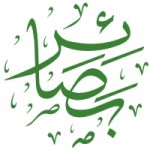

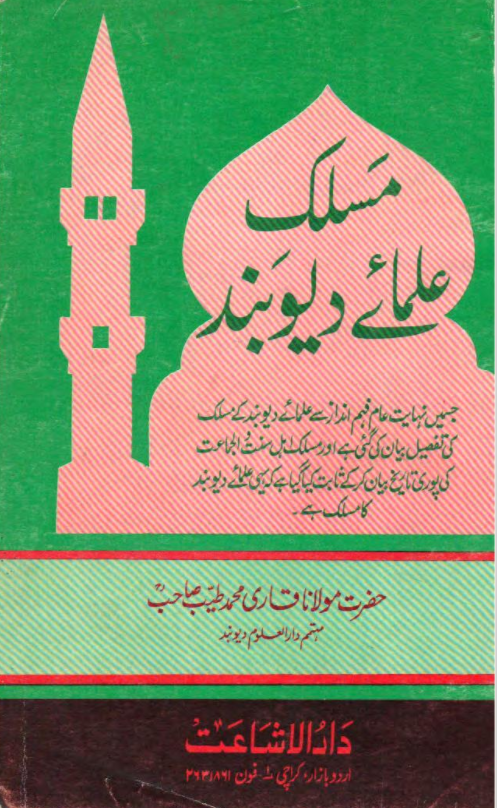
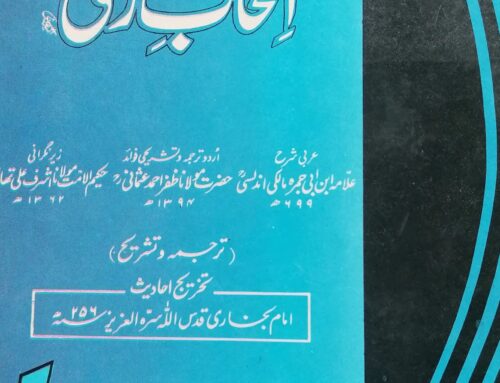
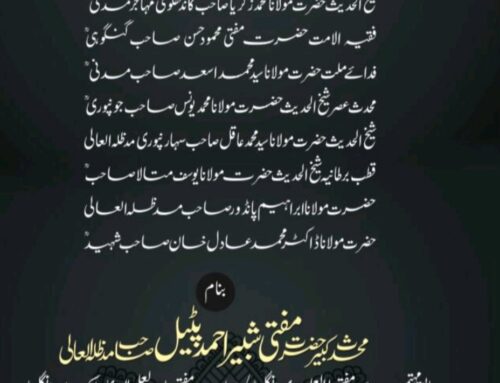
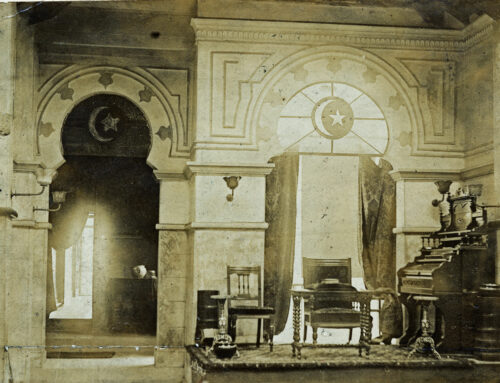
Leave A Comment